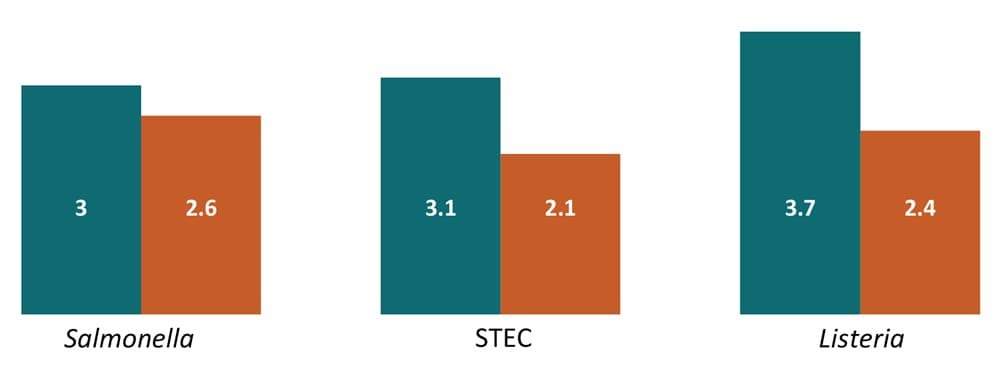What to know
OutbreakNet Enhanced (OBNE) is a Centers for Disease Control and Prevention (CDC) program that is designed to provide support to state and local health departments to improve their capacity to detect, investigate, control and respond to enteric disease outbreaks. OBNE started in August 2015 with 11 sites and expanded to 26 sites during 2017.

Highlights
Program overviews and activities supported by OBNE funds were presented at scientific conferences, programmatic meetings, and invited talks including:
- PulseNet and OutbreakNet regional meetings
- Council of State and Territorial Epidemiologists (CSTE) Annual Meeting
- Integrated Foodborne Outbreak Response and Management (InFORM) Conf.
- FDA Rapid Response Team (RRT) Annual Face-to-Face Meeting
- Site-specific meetings and training events
During 2017, the OBNE website was updated to include recent OBNE successes and the 2016 performance metrics data table and summary. Additional success stories will be added to the website in coming years.
Program performance
OBNE performance metrics have been collected since 2016 to document the burden, timeliness, and completeness of enteric disease outbreak activities. Sites report metrics annually on both laboratory and epidemiologic aspects of outbreak investigations. Metrics are reported for Salmonella, Shiga toxin-producing Escherichia coli (STEC), and Listeria (SSL metrics), and optionally for Shigella and Campylobacter. The metrics are revised as needed to best meet program needs.
Select 2017 Metrics for Salmonella, STEC, and Listeria (SSL)
- More than 40,000 cases reported
- Over 1,100 clusters detected
- Attempted interviews with an average of 92% of cases
Median number of days for OBNE sites to attempt to interview SSL case-patients decreased from 2016 to 2017
Improvements in timeliness help sites conduct faster investigations to quickly respond to and control outbreaks, preventing more people from getting sick.

Percentage of SSL primary isolates OBNE sites tested by whole genome sequencing at their Public Health Labs from 2016 to 2017A
While sites increased their capacity to conduct WGS testing, they maintained PFGE testing above 90% for SSL primary isolates.

Summary
- Not a required metric
